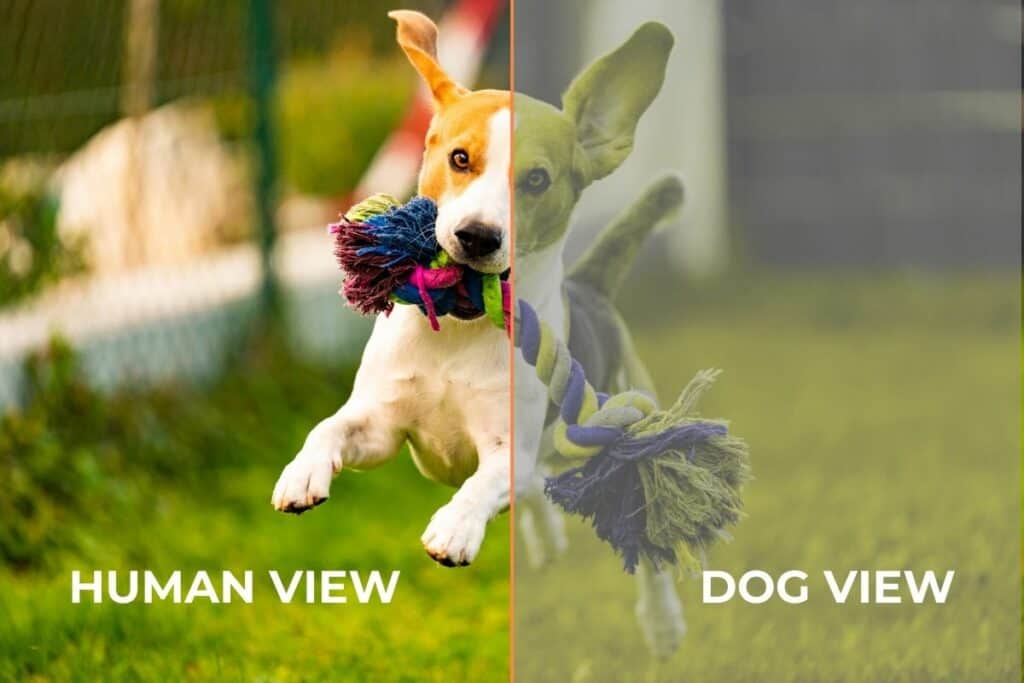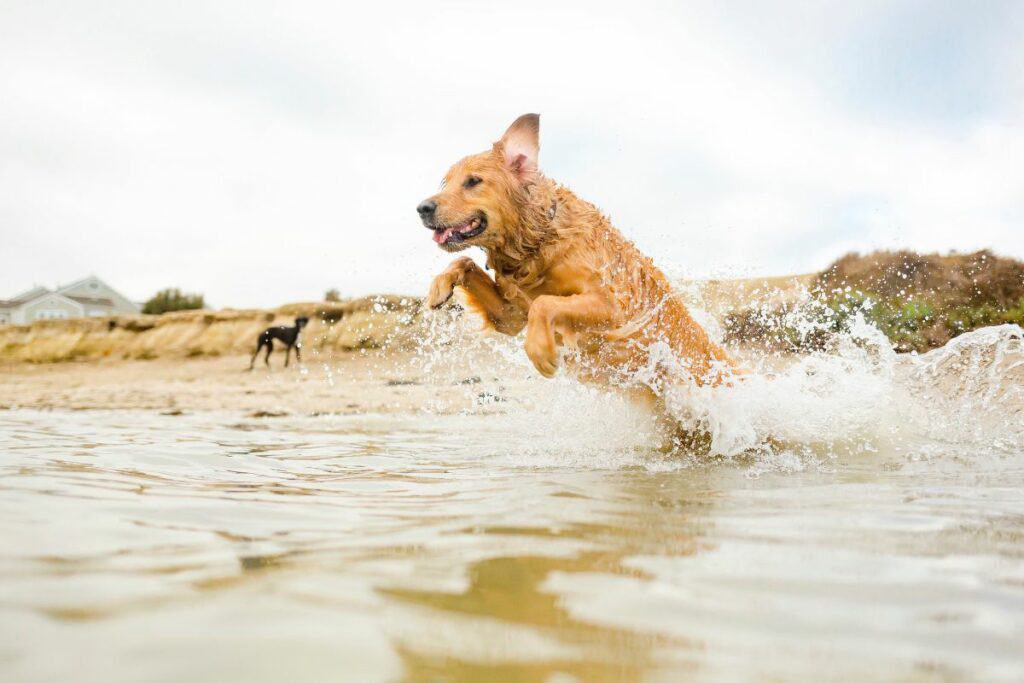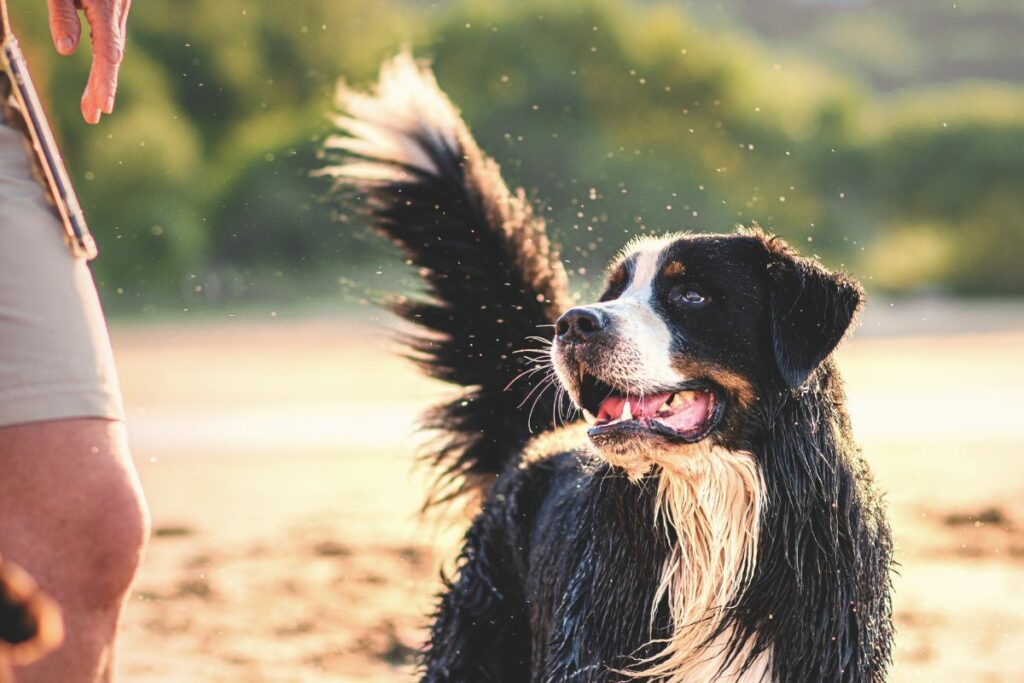Growing up with a furry best friend, I've always been fascinated by how they see the world, especially when it comes to colors. Today, I'm diving deep into what colors dogs can see and sharing my insights with fellow dog lovers. Contrary to the old myth that dogs only see in black and white, they actually perceive the world in shades of blue and yellow. This revelation has not only intrigued me but also enriched the way I interact with dogs, making our bond even stronger.
The Science Behind Canine Vision
Ever since I was a child, I remember hearing that dogs could only see in black and white. However, as I grew and delved into the world of canine companionship professionally, I learned that this couldn't be further from the truth. Dogs experience the world in color, but not in the same way we do. Humans have trichromatic vision, meaning we can see all three primary colors (red, green, and blue). Dogs, however, are dichromatic. This means they have two types of color receptors (cones) that are most sensitive to blue and yellow wavelengths.

The difference in color perception between dogs and humans can be attributed to the evolutionary paths we've taken. For humans, distinguishing between a wide range of colors was crucial for identifying ripe fruits and vegetables. Dogs, on the other hand, evolved as nocturnal hunters, relying more on light sensitivity and movement detection, which is why their vision is tailored to shades rather than vibrant color distinctions.
Colors Dogs Can See
The heart of our exploration brings us to the pivotal question: what colors can dogs actually see? Based on research and expert findings, dogs can perceive variations of blue and yellow. This means that what appears as red, green, or orange to us might appear as different shades of gray to our canine friends. Understanding this has changed the way I choose toys and accessories for my dogs. I now opt for items in colors they can easily distinguish, like blue and yellow, which they find more engaging and stimulating.
For safety reasons, this is also why dog sport equipment I almost always blue and yellow. When moving at a fast pace, dogs must be able to differentiate between obstacles and the floor so they don’t risk running into them and getting hurt.
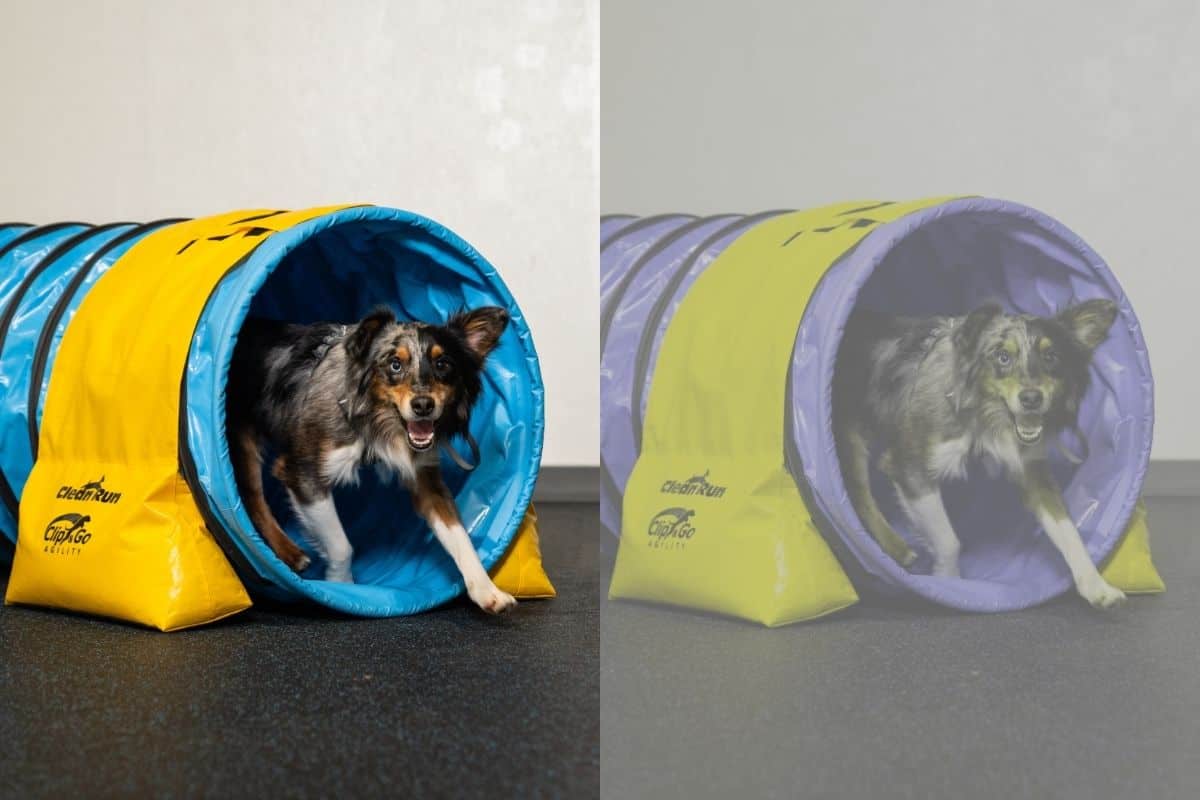
How Dogs See at Night
Another remarkable aspect of canine vision is their superior ability to see in dim light. This is largely thanks to their higher concentration of rod cells, which are more sensitive to light and motion than cones. Dogs also have a reflective layer behind their retinas called the tapetum lucidum, which acts like a mirror, reflecting light back through the retina and enhancing night vision. This adaptation makes dogs excellent companions for late-night walks, as they're far more aware of their surroundings than we are.

The World Through Their Eyes
Imagining the world through a dog's eyes has been a journey of empathy and understanding for me. Recognizing that their perception is not just a less colorful version of ours but a different visual experience altogether has deepened my appreciation for their unique way of interacting with their environment. For instance, a red ball on green grass might be hard for them to distinguish, not because they can't see the colors, but because both colors might appear as similar shades of gray. This realization influences everything from how I decorate my home to how I set up training sessions.
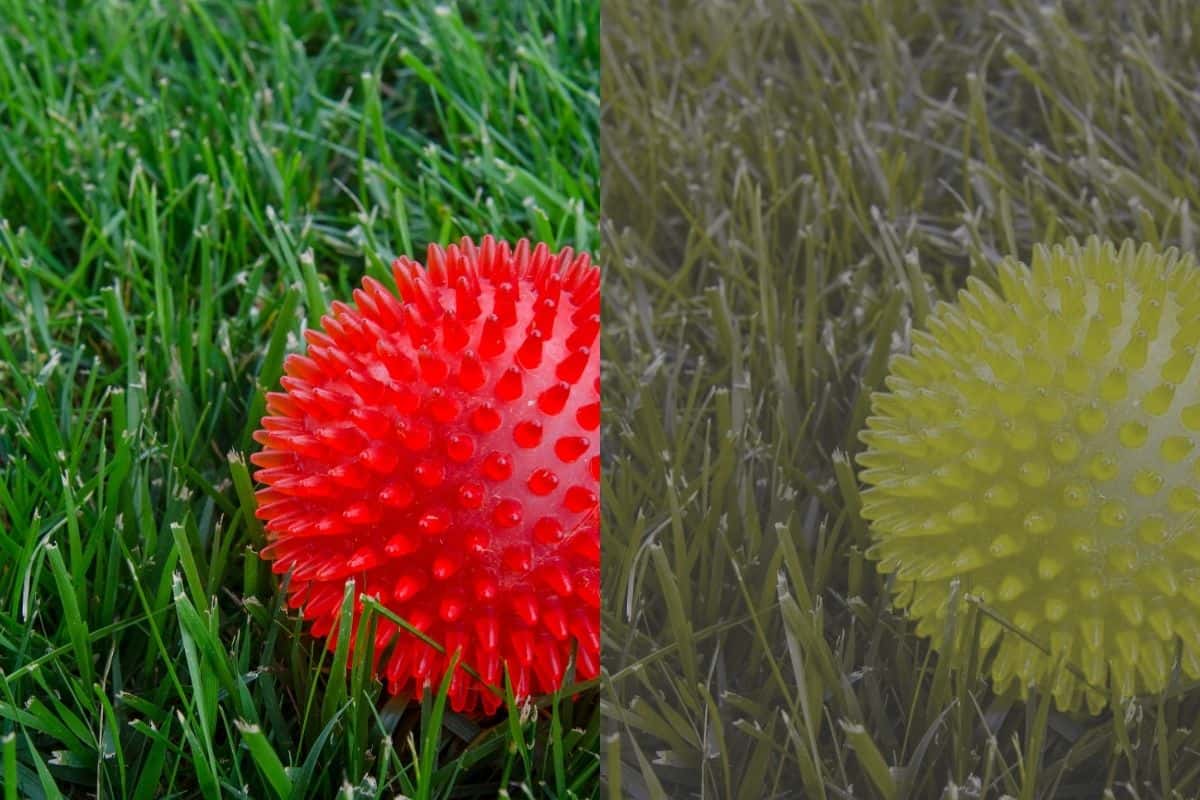
Canine Vision Compared to Human Vision
The comparison between canine and human vision illuminates just how differently we experience the world. While we enjoy a rainbow of colors, dogs see a more limited palette but make up for it with their ability to see better in low light and detect motion far more efficiently than we can. This difference has a profound impact on their behavior and how they interact with us. For example, they might be more attracted to a toy that moves or contrasts sharply against the background than one that's brightly colored.
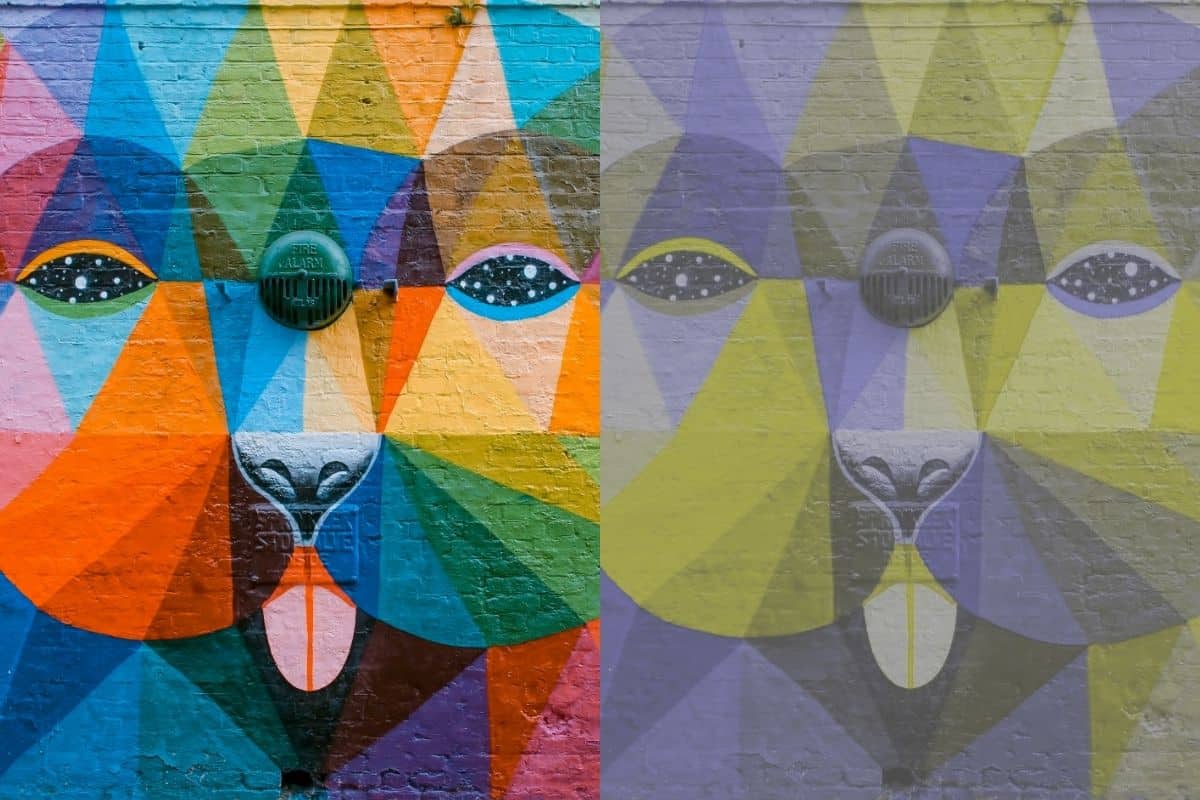
In conclusion, diving into the vibrant world of canine vision has revealed fascinating insights into what colors dogs can see and how they experience their environment differently from us. We've explored the science behind their dichromatic vision, unraveling the blues and yellows that paint their perspective, and examined their remarkable night vision capabilities. Understanding these aspects not only enriches our knowledge but also guides us in making more informed decisions regarding their care, play, and training. This journey through the lens of our canine companions underscores the importance of embracing their unique way of seeing the world, ensuring we provide a life full of color and joy tailored to their visual needs.
Frequently Asked Questions
The term "color blind" is a bit of a misnomer when it comes to dogs. While they don't see the same range of colors that humans can, dogs are not color blind in the sense that they only see black and white. Instead, they have dichromatic vision, meaning they see the world primarily in shades of blue and yellow. So, dogs do experience color, just not as vividly or as broadly as humans do.
Dogs see blue and yellow hues the best. This is because their eyes have two types of color receptors (cones) that are optimized to detect these colors. This means that items or toys in these colors are more likely to catch their attention and interest during play and training. Understanding this can help pet owners choose products that their furry friends will enjoy the most.
Dogs cannot see red and green as humans do. These colors may appear as shades of gray to a dog. The lack of receptors for red and green light means that these colors don't stand out to them in their environment. For example, a red toy thrown onto green grass might be harder for a dog to distinguish compared to a blue or yellow toy in the same setting.
Yes, dogs have superior night vision compared to humans. This is thanks to their high number of rod cells, which are more sensitive to light and motion, and the presence of the tapetum lucidum, a reflective layer behind their retinas that enhances their ability to see in low light. This allows dogs to navigate and perceive their surroundings in conditions where humans might struggle to see. However, it's important to note that while dogs can see better in the dark than humans, they still need some light to see and are not able to see in complete darkness.
The dichromatic color vision of dogs influences their interest in certain toys and objects, preferring items in shades they can easily distinguish, such as blues and yellows. It also affects their hunting and tracking behaviors, as they rely more on movement and light contrast than on color.
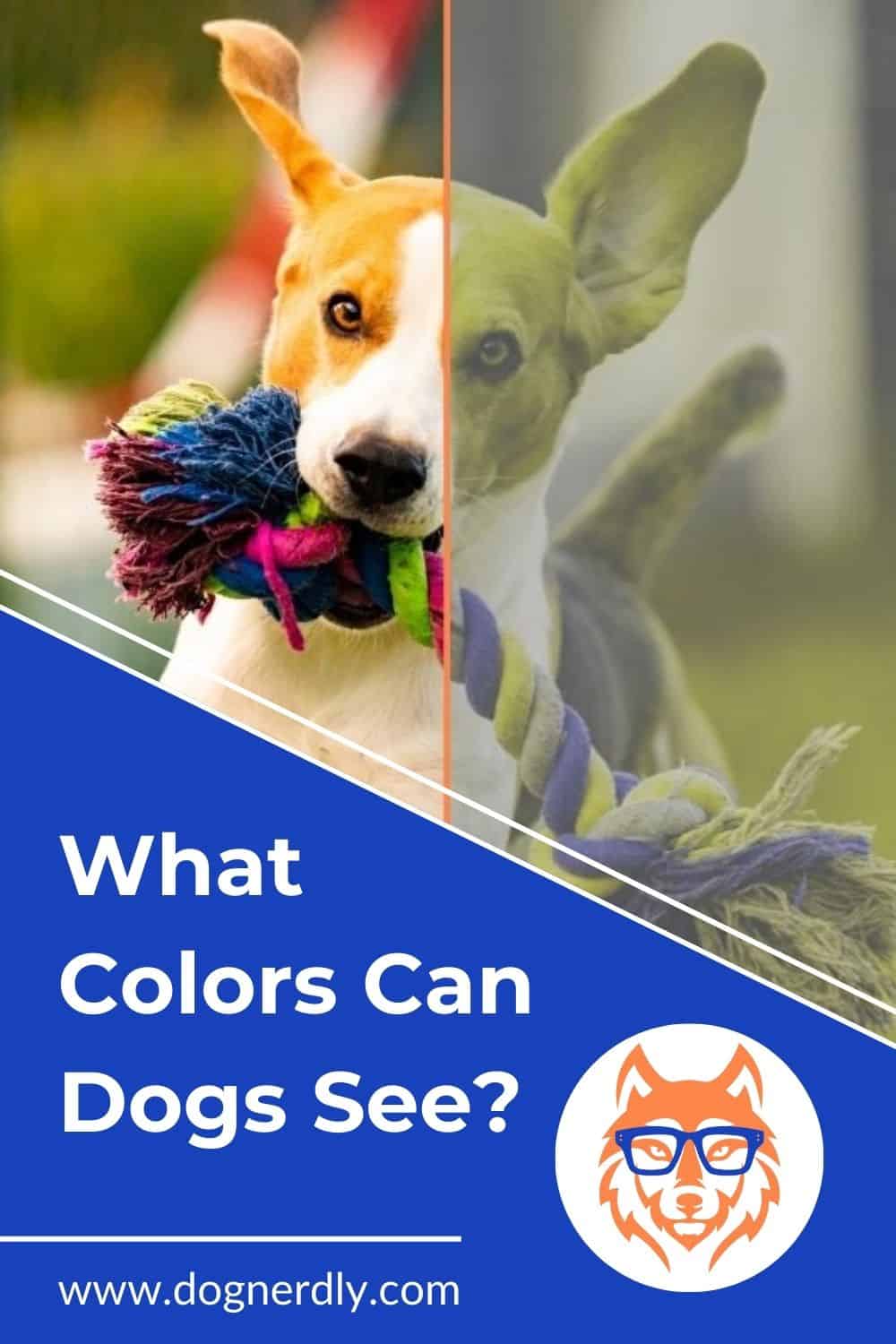
Joseph Schifano is the President of The Academy of Pet Careers and Founder of DogNerdly.
With over 20 years of professional pet experience, Joseph got his start as an owner/operator of a 7-figure, all-inclusive pet care business. From there, he purchased The Academy of Pet Careers with a hopes of improving the quality of care provided by industry professionals. This role allowed Joseph to rub shoulders with some of the biggest names in the industry, and gain knowledge in every aspect of pet care.
After witnessing the popularity of social media influencers and the amount of misinformation being taught to pet parents, Joseph decided to create DogNerdly. The goal was to provide science-backed education for the average dog nerd in order to create a world where dogs and humans can live a more harmonious and empowered lifestyle.
